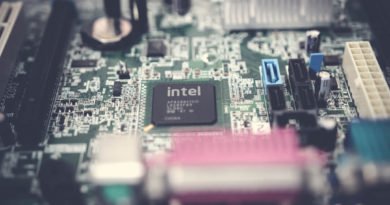What is GPU Artifacting & How To Fix It
GPU artifacts can manifest in a variety of ways, but typically it manifest as graphical glitches or corruption in your graphics files (Graphics software). This can be caused by a variety of issues, but the most common culprit is overheating and improper graphics card overclocking. In GPU Artifacting, you’ll notice improper dots, pixels, and lines on your display even when you are not gaming.
GPUs can become artifact-ridden when they reach a certain temperature. This is due to the fact that the GPU is essentially a hot, small computer part that is working very hard to render graphics.
How to fix GPU Artifacting? The simple answer is that GPU Artifacting can be fixed with a proper cooling solution. You will need to lower the graphics card’s power limit in order to prevent overheating. You will also need to disable overclocking if you are overclocking your graphics card.
GPU artifacts can also be caused by a variety of other issues. This can include software, hardware, and driver problems.
In this blog post, you will learn about GPU Artifacting & How To Fix It.
5 Easy fix for GPU Artifacts
1. Stop Overclocking your GPU

Overclocking is the first step to fixing GPU artifacting. You can use MSI Afterburner to check your GPU’s current clock speed. If you have overclocked your GPU, we recommend lowering the Clock speed. If your GPU is not properly overclocked, it may cause GPU artifacting. You can see this by running a benchmark test like 3DMark. Here’s a guide about how to overclock your graphics card with MSI Afterburner.
2. Lower your GPU Temperature

Another reason for this is that the GPU needs to be cooled properly to prevent overheating. When you are gaming, the more heat is released by your system and the hotter the GPU will get. So, try reducing game settings to remove the burden from the Graphics card.
You can do this by changing the fan speed. The fans’ speed depends on the type of card. If your GPU is too hot, it may cause problems other than Artifacts. These include lag, stuttering, and freezing. The best way to lower your GPU temperature is to install software called MSI Afterburner. Here’s the full guide on how to adjust the Fan speed.
3. Update your Graphics Drivers
It might help to use the latest available drivers from NVIDIA or AMD. This way, you will make sure that you have the best possible hardware. As soon as you check for software updates, you should check your graphics card to ensure it is working properly.
4. Change Thermal Paste
The thermal paste is a very important component for cooling your system. When it has dried, the thermal paste starts to become ineffective and you will have to change it. It is supposed to conduct heat away from your GPU and distribute it evenly. When it dries, it becomes clumpy and stops its function.
Changing Thermal Paste can be a little difficult task. You have to remove the Fans and the heatsinks of the graphics card to apply thermal paste. First, remove the fans and heatsinks from the graphics card. You will need a small head screwdriver and a thermal paste removal tool. To remove the heatsink, first, use the thermal paste removal tool to pry it off the chip. Then apply the thermal paste on the GPU and assemble the Heatsinks and fans.
5. Remove the Dust
If non of the method worked try cleaning your Graphics card. The CPU and GPU are two of the most sensitive components in your computer. This is why you need to clean them frequently. They will stay much cooler and longer if they are kept clean. You can clean your GPU using a cotton swab. Use a clean microfiber cloth to wipe the RAM.
Conclusion
Most of the time, GPU artifacts are fixed by just underclocking and improving the cooling of the Graphics card.
This is all you need to know about fixing a graphics card. If none of the methods worked, it is time to replace your graphics card. If your graphics card is under warranty, contact the manufacturer and have the card replaced or fixed. It will make your computer work better, and you will be able to get back into gaming much faster.
Here is a short video of how you can fix GPU artifacts.
Source: Techquickie channel
FAQs
Do Freeing VRAM space help to avoid GPU artifacts?
Yes. You should free up VRAM to avoid GPU artifacts. However, you should not increase the amount of VRAM beyond what is necessary. Freeing up VRAM space can remove performance issues. It is better to keep the VRAM at the lowest setting possible.
Can dust cause GPU artifacts?
Yes. Dust can cause GPU artifacts. It can block the GPU and prevent it from getting enough air and power.
What are the basics reasons for GPU artificats?
As mentioned before, GPU artifacts can occur for various reasons. Some of the main causes of GPU artifacts are overheating, memory problems, bad connectors, low-quality cables, and dust.
Is Artifacting Permanent?
As a matter of fact, there are many types of GPU artifacts. We can classify them into two major categories: permanent GPU artifacts and temporary GPU artifacts. Temporary GPU artifacts can be solved by above mentioned methods like Undercooling your GPU and Improving cooling. But Permanent GPU artifacts are caused by a damaged graphics card. They cannot be fixed and they must be replaced.
Are Artifacts Dangerous?
It is true that GPU artifacts can be dangerous if you don’t fix them. They can cause permanent damage to the Graphics card. As a result, you may end up with a faulty graphics card.
What does it mean when I see artifacts on my monitor?
It means that the graphics card is not displaying the pixels on the screen in the right order.




